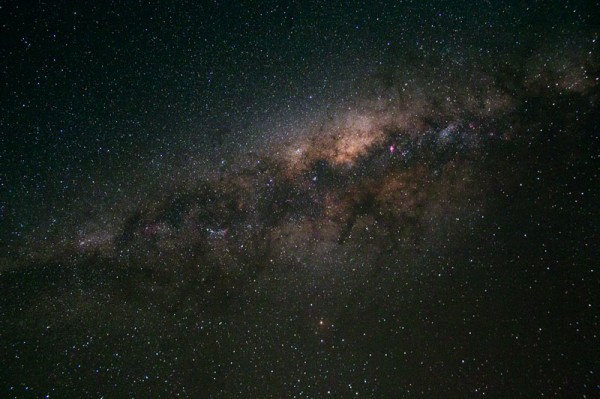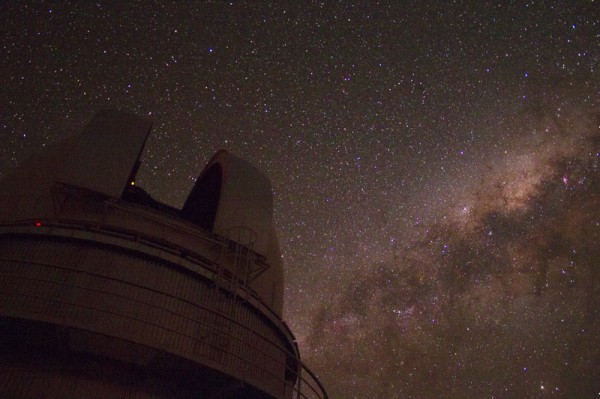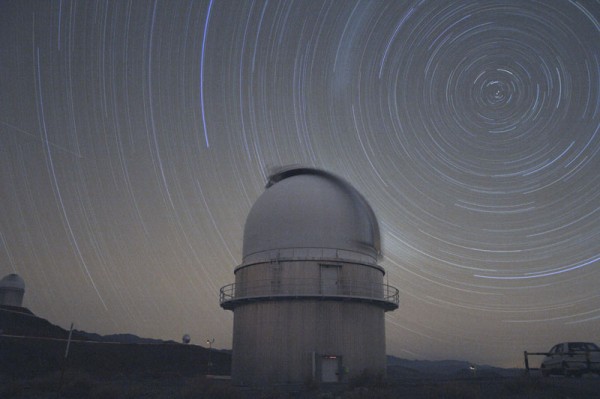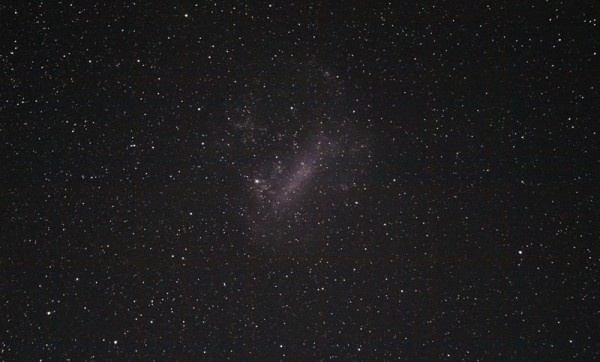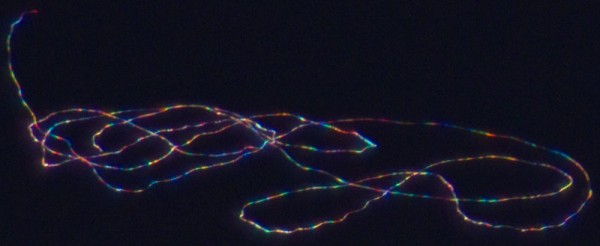Archives
- August 2013 (1)
- July 2013 (1)
- June 2013 (1)
- March 2013 (1)
- September 2012 (6)
- August 2012 (3)
- January 2012 (1)
- October 2011 (2)
- March 2011 (2)
- February 2011 (3)
- January 2011 (1)
- December 2010 (2)
Categories
- Airplane (1)
- Comet (1)
- Constellation (4)
- Fireworks (1)
- Galaxies (4)
- Jupiter (3)
- Light grafitti (1)
- Meteor (3)
- Moon (4)
- Other (1)
- Satellite (1)
- Saturn (1)
- Star (2)
- Star cluster (1)
- Star trails (7)
Startrails and the Danish 1.54 meter Telescope
I am spending my nights here at La Silla in the Danish 1.54 meter telescope. A couple of nights ago I programmed my camera to take a bunch of photos of the telescope with the stars in the background. Each photo had an exposure time of 20 seconds, a focal length of 18mm, an ISO of 6400 and an f-number of f/3.5. After two and a half hours I had a full memory card and 298 photos. Here is one of them, the two puffy things are the Magellanc Clouds:
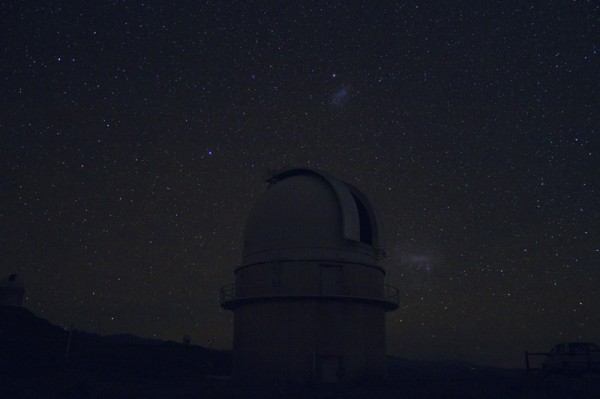 I used Nebulosity to stack the photos with no shifting so that the stars would make trails across the sky. Then I adjusted the curves and colors in Photoshop. I am still very new at this and I am not sure how far away from perfection I am, but I sure do like the result. :)
I used Nebulosity to stack the photos with no shifting so that the stars would make trails across the sky. Then I adjusted the curves and colors in Photoshop. I am still very new at this and I am not sure how far away from perfection I am, but I sure do like the result. :)
Posted in Star trails
Leave a comment
The Large Magellanic Cloud
The Magellanic Clouds are visble with the naked eye here at La Silla. They look like two pieces of the Milky Way broke off and floated across the sky. Last night I zoomed in on the Large Magellanic Cloud with my standard 18-55 mm lens set to 55 mm, and after focusing I took 12 photos with an exposure time of 15 seconds, an ISO of 6400 and an f-number of f/5.6.
I then used Nebulosity to stack the photos. I had not used that program before, but I quickly became very fond of it. I did the final tweaking of curves and colors in Photoshop and I just love the result. This sky is amazing!
Posted in Galaxies
Leave a comment
La Silla’s Moon
As a part of my PhD studies I am currently on a two-week observing mission at La Silla, Chile. I am using the Danish 1.54 meter telescope to search for exoplanets with the microlensing method. The night sky here is simply amazing, and I have of course brought my camera and my tripod.
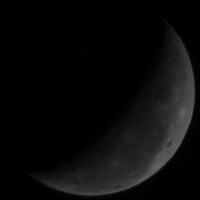 On my second night here (in the early morning after observering most of the night) I took a series of images of the Moon with my borrowed 28-200 mm zooming lens. It is upside down here, very funny. ;) Keeping the focal length at 200 mm I varied the exposure time, the ISO and the f-number. This is the best image, I think. It has an exposure time of 1/80 seconds, an ISO of 100 and an f-number of f/11.
On my second night here (in the early morning after observering most of the night) I took a series of images of the Moon with my borrowed 28-200 mm zooming lens. It is upside down here, very funny. ;) Keeping the focal length at 200 mm I varied the exposure time, the ISO and the f-number. This is the best image, I think. It has an exposure time of 1/80 seconds, an ISO of 100 and an f-number of f/11.
Posted in Moon
Leave a comment
Zoom, zoom, zoom
I have gotten my hands on a 28-200mm zoom lens from Tamron. I borrowed it from one of my new colleagues at the Niels Bohr Institute where I have just started as a PhD student.
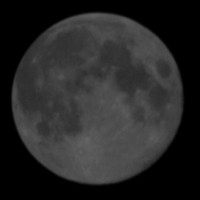 This is the first time I have had access to such a long focal length and as chance would have it, the moon was full last night. Since I had no prior experience with such a bright object I did a whole lot of bracketing, varying the f-stop, ISO and shutter speed. The image on the left is among the best in the batch: 200mm focal length, f/32, ISO 100 and a shutter speed of 1/40 seconds. It is not very sharp, though. I think it is because there was a thin cover of clouds.
This is the first time I have had access to such a long focal length and as chance would have it, the moon was full last night. Since I had no prior experience with such a bright object I did a whole lot of bracketing, varying the f-stop, ISO and shutter speed. The image on the left is among the best in the batch: 200mm focal length, f/32, ISO 100 and a shutter speed of 1/40 seconds. It is not very sharp, though. I think it is because there was a thin cover of clouds.
I then took a series of photos of the stars Arcturus and Capella. They are both very bright and their scintilation due to atmospheric turbulence is therefore very clear. I took some long exposures while moving the camera around, thus capturing their varying brightness and colors. The photo below is of Capllea. It is a 10 second exposure at 200mm with f/5.6 and ISO 400.
Posted in Moon, Star
Leave a comment
